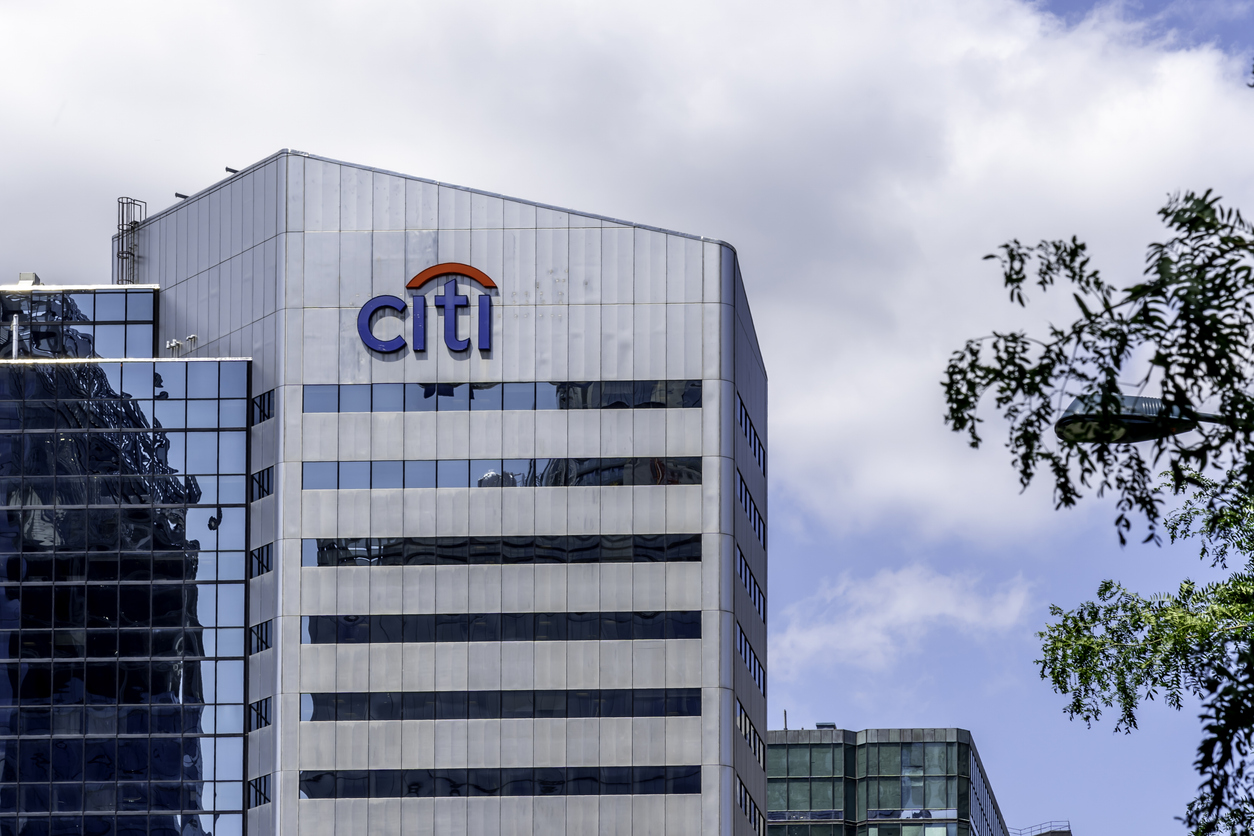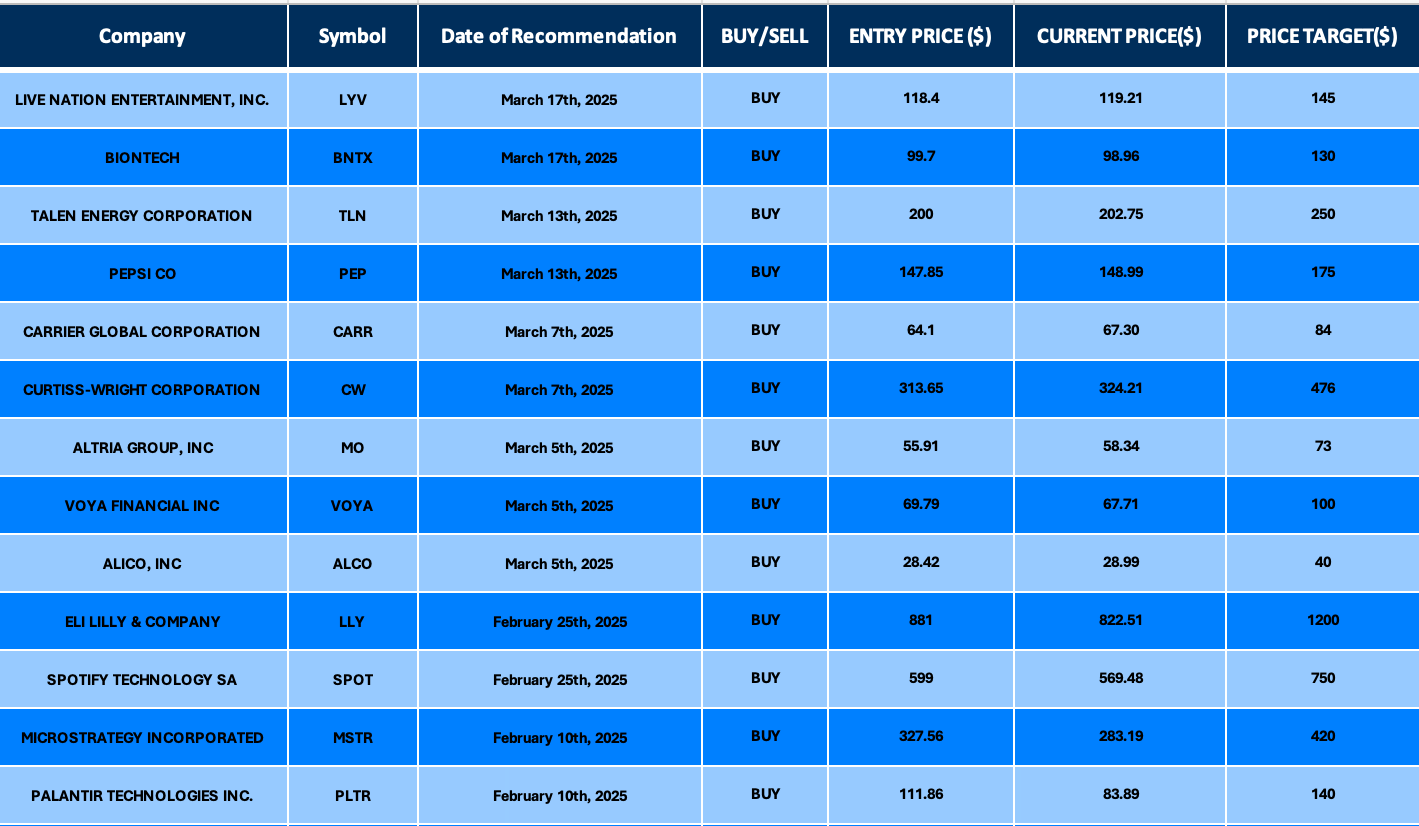
Date Issued – 14th April 2025
Preview
Markets enter the week on edge as escalating U.S.-China trade tensions threaten global growth momentum
While a surprise jump in Chinese exports and selective U.S. tariff exemptions buoyed Asian equities, Citigroup’s downgrade of U.S. stocks to neutral highlights growing concern over earnings headwinds. Apple led a tech rally after smartphones and laptops were spared from tariffs, but President Trump’s threat to target semiconductors keeps uncertainty elevated.
Meanwhile, China’s credit surged in March on record government bond issuance, signaling aggressive stimulus to offset external shocks. Yet, the labor market remains fragile, with up to 20 million jobs tied to U.S. exports at risk. Goldman Sachs now sees China’s 2025 GDP growth at just 4%, down from 4.5%.
Investors are watching for fresh policy responses as Beijing seeks to hit its 5% growth target amid fading private-sector hiring and soft consumer sentiment. With volatility rising, equity positioning is shifting toward Japan and away from emerging markets, as global investors seek relative shelter from trade-driven turbulence.
Asian Stocks Climb as Trade Tensions Ease Slightly and Wall Street Rallies
Asian markets kicked off the week with broad gains, buoyed by a modest easing in U.S.-China trade tensions and a strong rebound on Wall Street. Japan’s Nikkei 225 rose 1.8%, South Korea’s Kospi added 0.8%, and Hong Kong’s Hang Seng surged 2.4%, led by tech stocks and upbeat Chinese export data.
Investors responded positively after President Trump signaled that key electronics like smartphones and laptops would be spared from the latest round of tariffs, even as broader trade risks persist. China’s 12.4% export growth in March added to optimism, though tensions remain elevated following Beijing’s latest retaliatory measures.
U.S. bond yields pulled back from multi-year highs, with the 10-year Treasury at 4.466%, while gold extended its climb to a record $3,249 an ounce. Oil prices edged lower and the dollar weakened, reflecting cautious sentiment amid ongoing geopolitical and inflation concerns.
Investment Insight
Markets are navigating a fragile reprieve in trade tensions. The tech-led rally underscores selective investor optimism, but sustained volatility in rates and safe-haven flows into gold highlight persistent macro uncertainty. In this environment, investors should prioritize defensiveness and earnings quality, particularly in sectors with global supply chain exposure and pricing resilience.
China’s Credit Growth Surges as Beijing Front-Loads Stimulus Amid Tariff Pressures
China’s credit expansion sharply overshot expectations in March, reflecting a policy-driven push to cushion the economy from intensifying U.S. trade tariffs. Aggregate financing rose 5.89 trillion yuan ($808 billion), up nearly 22% year-on-year and well above the 4.96 trillion yuan consensus estimate.
The surge was led by a record wave of sovereign and local government bond issuance—nearly 1.5 trillion yuan—as Beijing accelerated fiscal spending to buffer against export headwinds. New bank loans also beat forecasts, reaching 3.64 trillion yuan. However, the uptick was concentrated in short-term corporate loans, while long-term business credit remained sluggish, signaling muted private sector confidence.
Meanwhile, money supply indicators showed mixed trends, and housing loan data suggested continued softness in the property market. Though the U.S. exempted some electronics from tariffs, broader uncertainty continues to weigh on investment sentiment.
Investment Insight
The scale and structure of China’s credit expansion point to a top-down stimulus effort rather than organic economic momentum. With long-term corporate borrowing still subdued, investors should be cautious of near-term growth sustainability. Policy-sensitive sectors—particularly infrastructure, banks, and select state-linked SOEs—stand to benefit, but broader equity and credit markets may remain volatile amid unresolved trade risks and fragile consumer demand.
Tariffs Threaten Millions of Chinese Jobs as Economic Pressures Mount
China’s labor market is showing signs of strain as U.S. tariffs—now as high as 145%—threaten to undermine export-driven employment. Goldman Sachs estimates up to 20 million Chinese workers are exposed to U.S.-bound trade, raising the risk of widespread job losses amid weakening corporate hiring.
Despite early 2025 growth holding above 5%, policy stimulus has yet to meaningfully lift employment indicators. Job postings have fallen sharply, and business surveys show declining hiring intentions. While sectors like heavy equipment and AI-linked firms are showing momentum, broader confidence remains fragile.
With exports to the U.S. at risk and consumption still tepid, economists warn that up to 3% of GDP could be jeopardized. The central bank has held off on rate cuts so far, but calls for stronger stimulus are growing louder as Beijing aims to meet its 5% growth target.
Investment Insight
High U.S. tariffs are accelerating structural shifts in China’s economy, exposing vulnerabilities in labor-intensive export sectors. Investors should watch for increased policy intervention aimed at domestic demand and consumption. Sectors tied to infrastructure, automation, and AI innovation may outperform, while export-reliant industries face sustained headwinds.

Citigroup Cuts U.S. Equities to Neutral on Tariff-Driven Earnings Risk
Citigroup downgraded its outlook on U.S. equities to neutral from overweight, citing growing risks to corporate earnings from President Trump’s sweeping tariffs. The bank warned that the exceptional performance of U.S. stocks is losing its edge, with trade policy creating headwinds for both GDP and earnings per share. The S&P 500 last closed at 5,363.36, having rebounded on Friday, but Citigroup sees downside risk as tariffs weigh on profit margins.
The firm simultaneously upgraded Japanese equities to overweight, pointing to relative resilience, while cutting emerging markets to underweight amid rising global uncertainty.
Investment Insight
Citigroup’s shift underscores the rising pressure tariffs pose to U.S. corporate profitability. Investors should brace for downward revisions in earnings estimates and consider diversifying exposure toward developed markets with stronger policy visibility and lower geopolitical risk—particularly Japan. Defensive positioning within U.S. equities, favoring sectors less exposed to global trade flows, may offer relative stability in a volatile macro backdrop.
Tech Stocks Rally as U.S. Tariff Exemptions Lift Sentiment
Apple led a broad tech rally in Frankfurt trading, jumping over 6% after the U.S. granted tariff exemptions on smartphones, computers, and other electronics predominantly imported from China. Nvidia rose more than 3%, Dell surged 6.3%, and ASML gained 2.8%, as investors welcomed the targeted relief.
Nasdaq futures advanced 1.6% in early European hours, reflecting optimism for the sector. However, uncertainty lingers after President Trump signaled plans to impose new levies on imported semiconductors in the coming week, threatening to reintroduce volatility just as markets began to recover.
Investment Insight
The tariff reprieve offers temporary relief for hardware-focused tech names, particularly those with deep China exposure. While the bounce reflects easing near-term pressure, the threat of semiconductor tariffs underscores ongoing policy unpredictability. Investors should remain selective within tech—favoring firms with diversified supply chains and pricing power—while preparing for renewed volatility as geopolitical risks evolve.
Conclusion
As trade tensions intensify and policy responses ramp up, markets are recalibrating to a more uncertain global outlook. China’s stimulus efforts may support near-term growth, but persistent labor market weakness and external shocks cloud the path ahead.
In the U.S., tariff-driven earnings risks are prompting a shift in equity positioning, with investors rotating toward more stable developed markets like Japan. While selective relief in tech offers pockets of optimism, the broader environment remains fragile.
With volatility set to remain elevated, investors will need to navigate policy signals carefully and prioritize resilience, diversification, and earnings quality in the quarters ahead.
Upcoming Dates to Watch
- April 16th, 2025: Industrial Production
Find below some of our Buy/Sell Recommendations. Balfour Capital Group is a distinguished global boutique investment management firm with $350 million AUM and over 1000 Clients.

Disclaimer: This post provides financial insights for informational purposes only. It does not constitute financial advice or recommendations for investment decisions.




